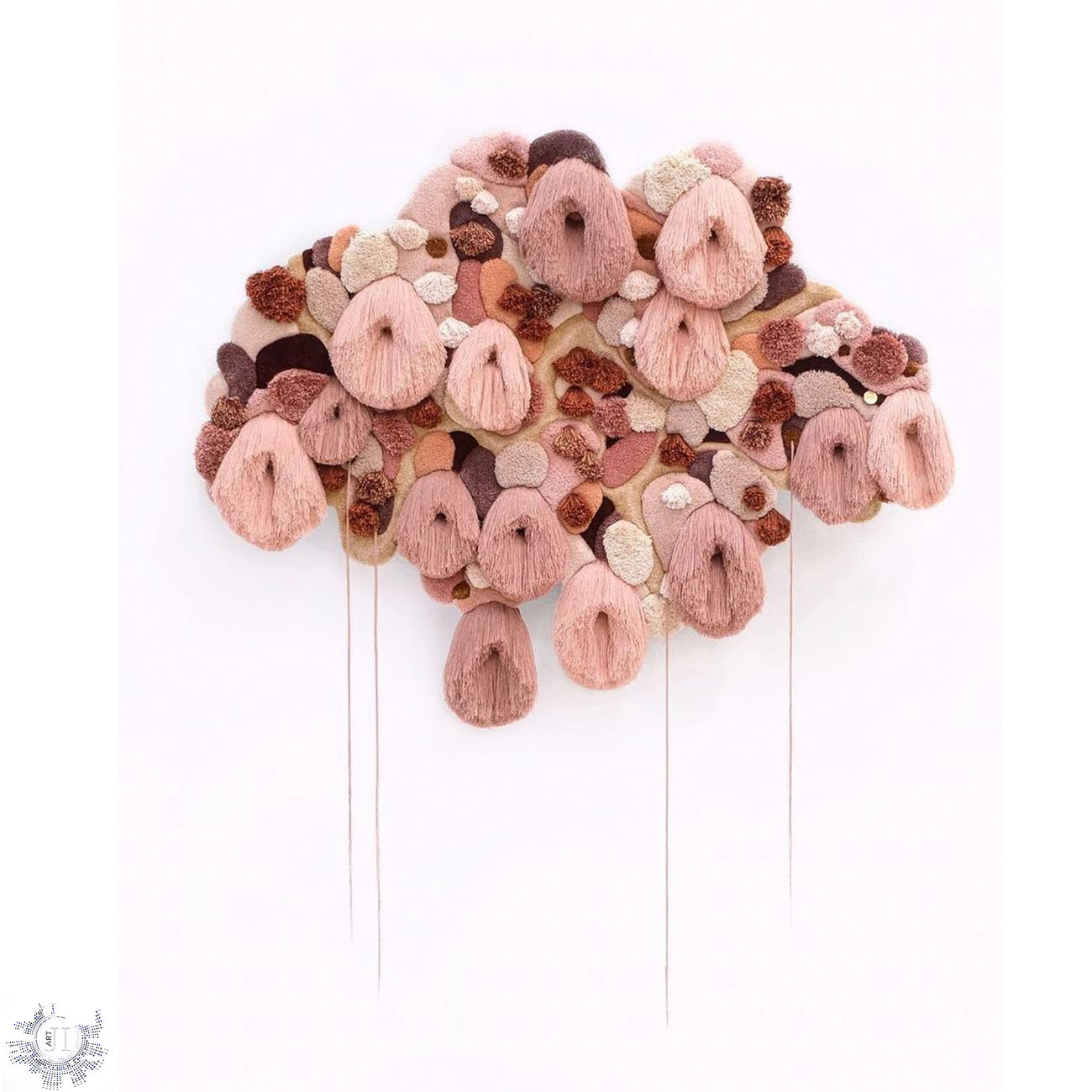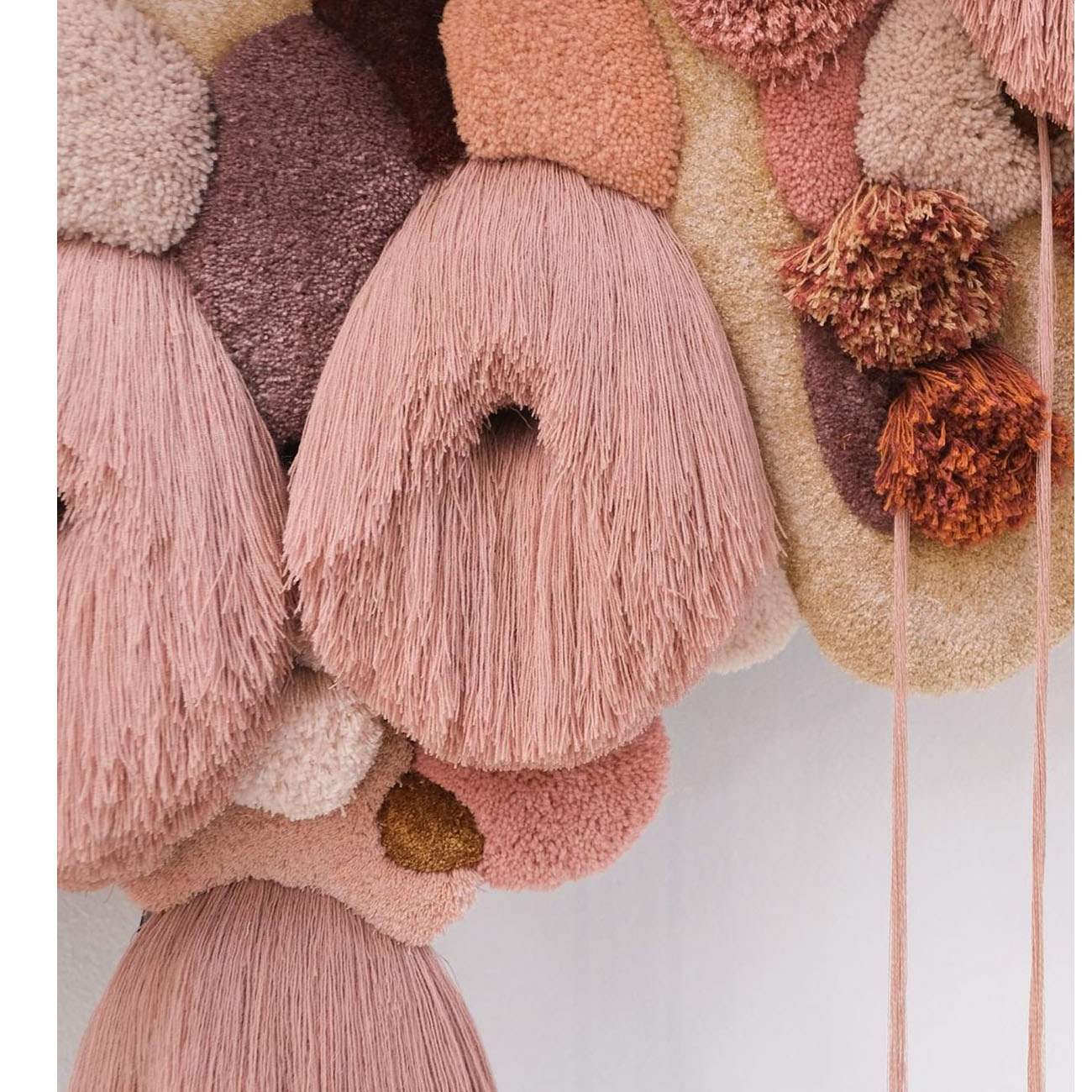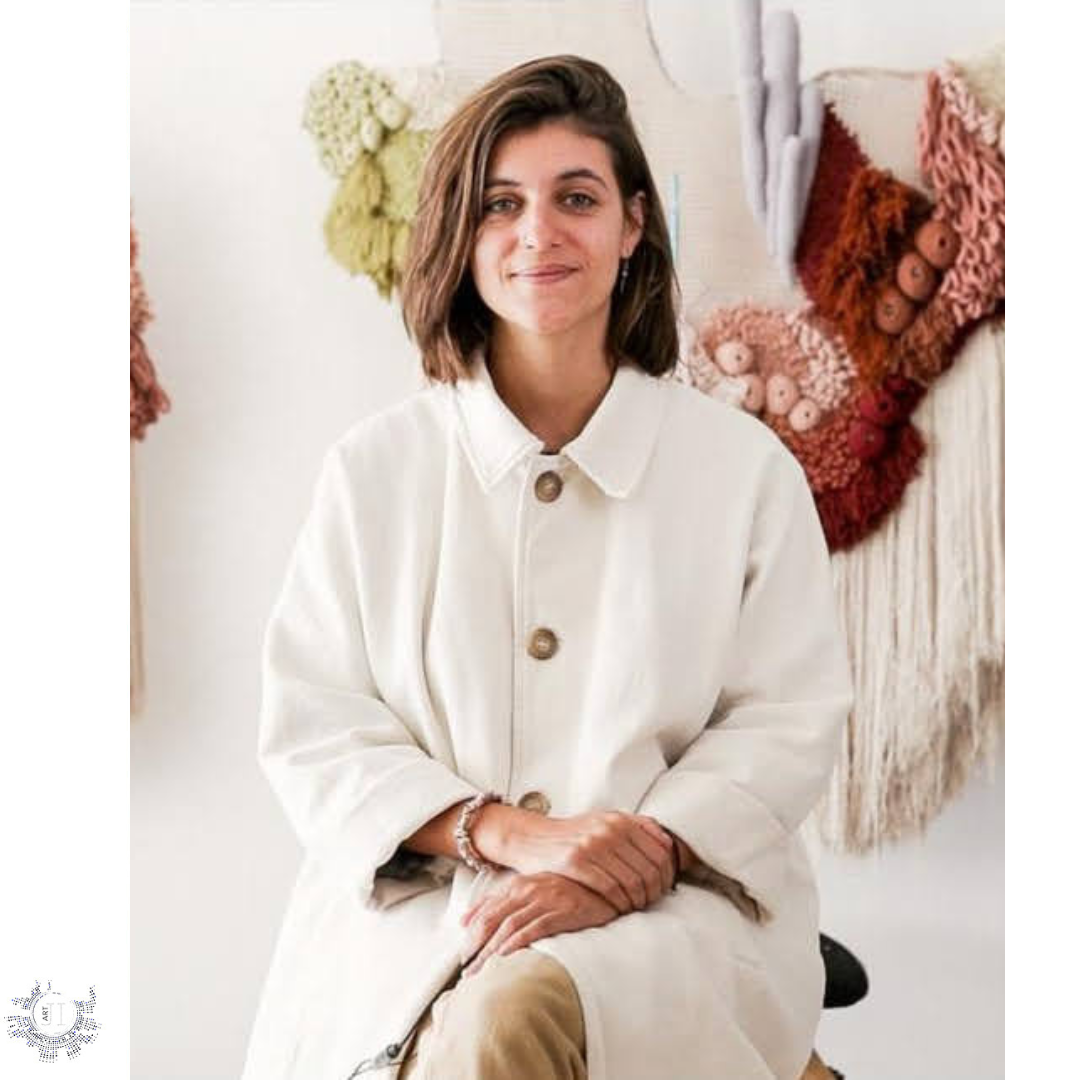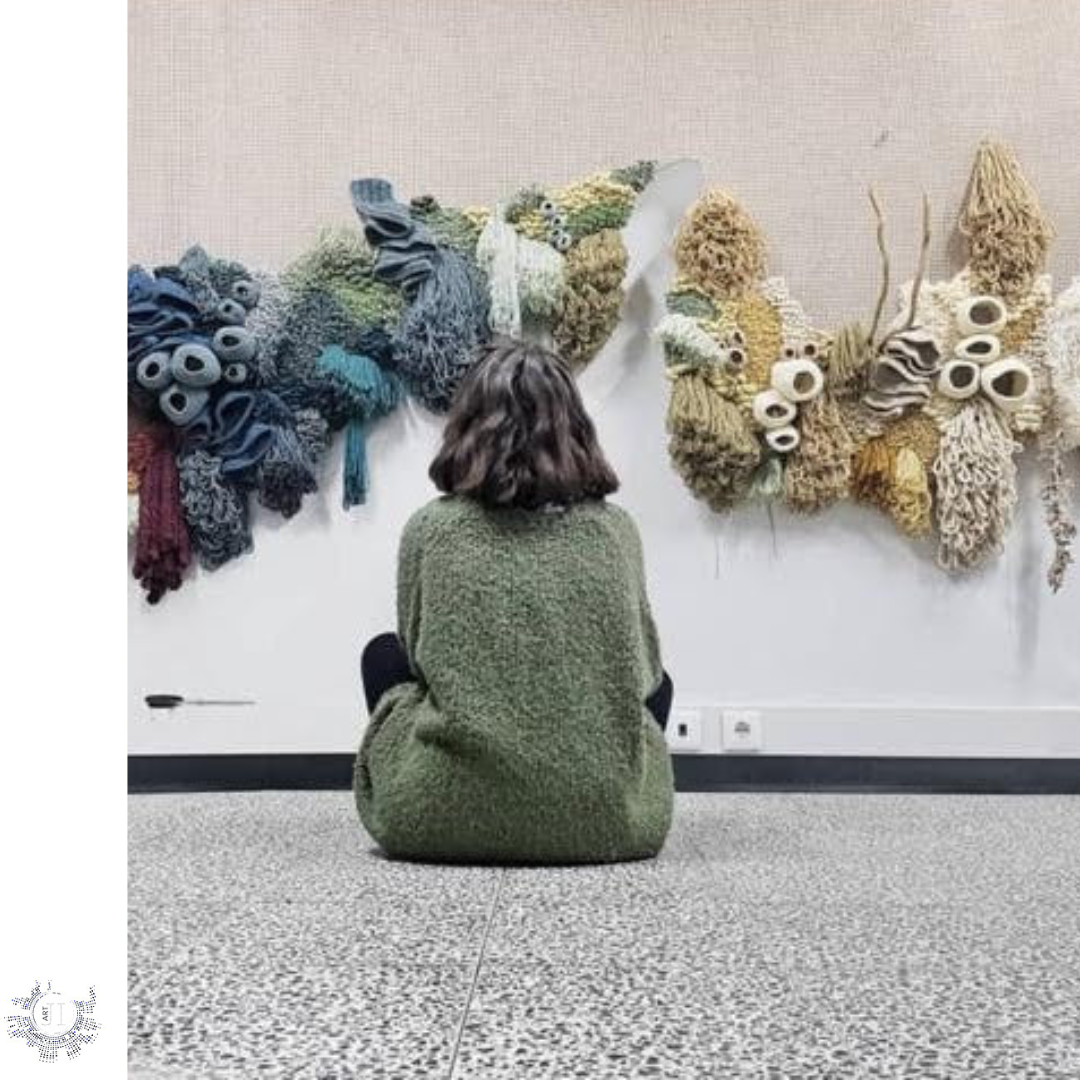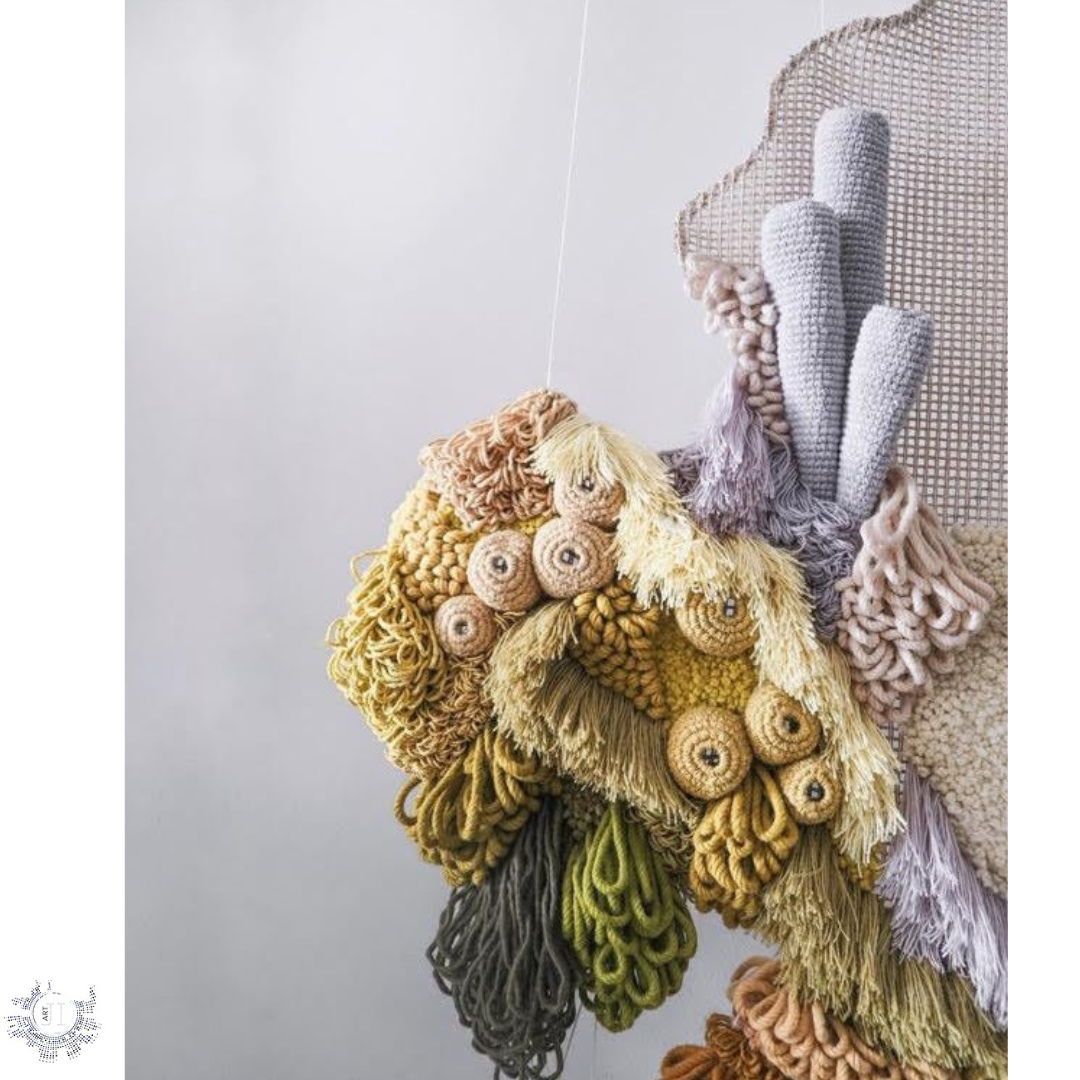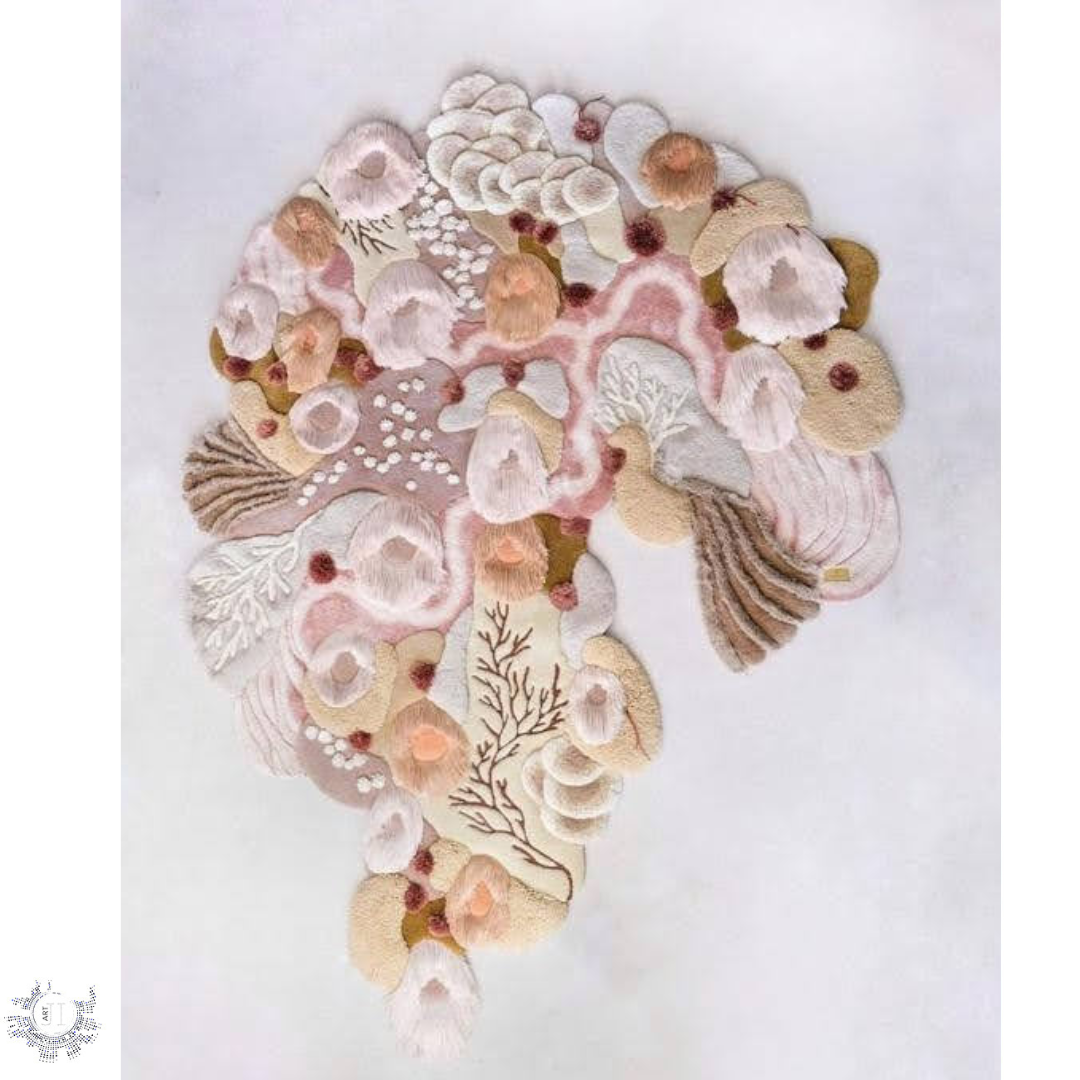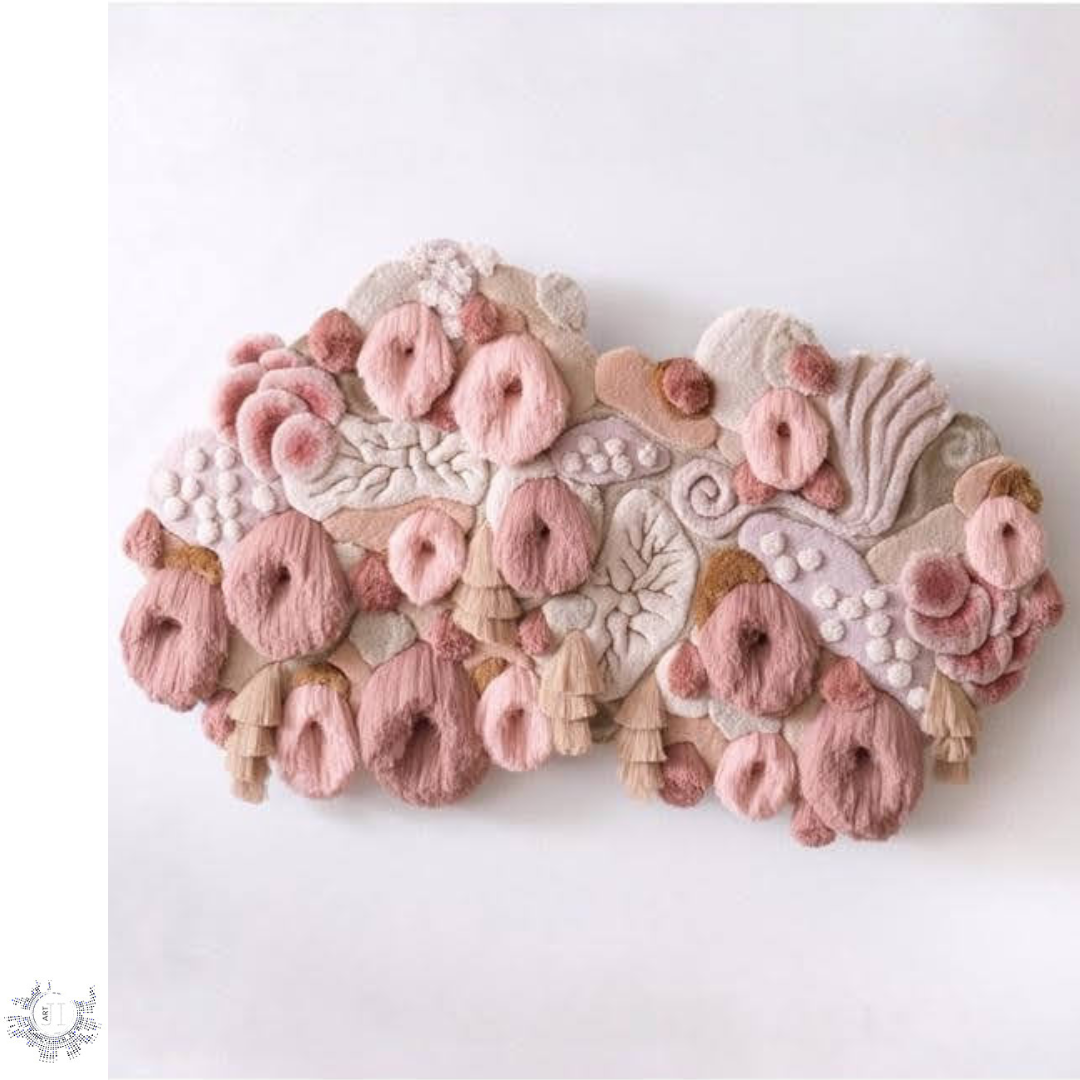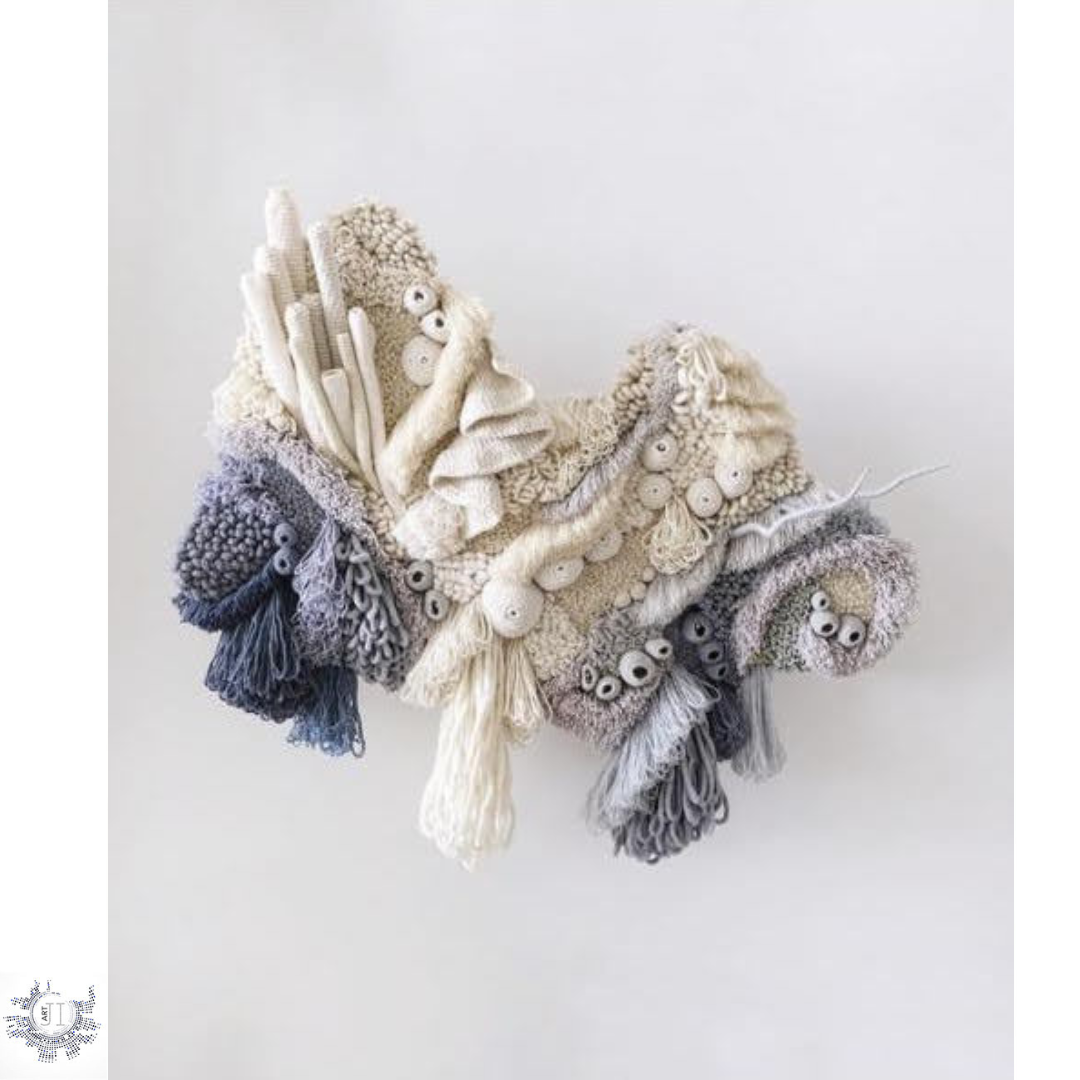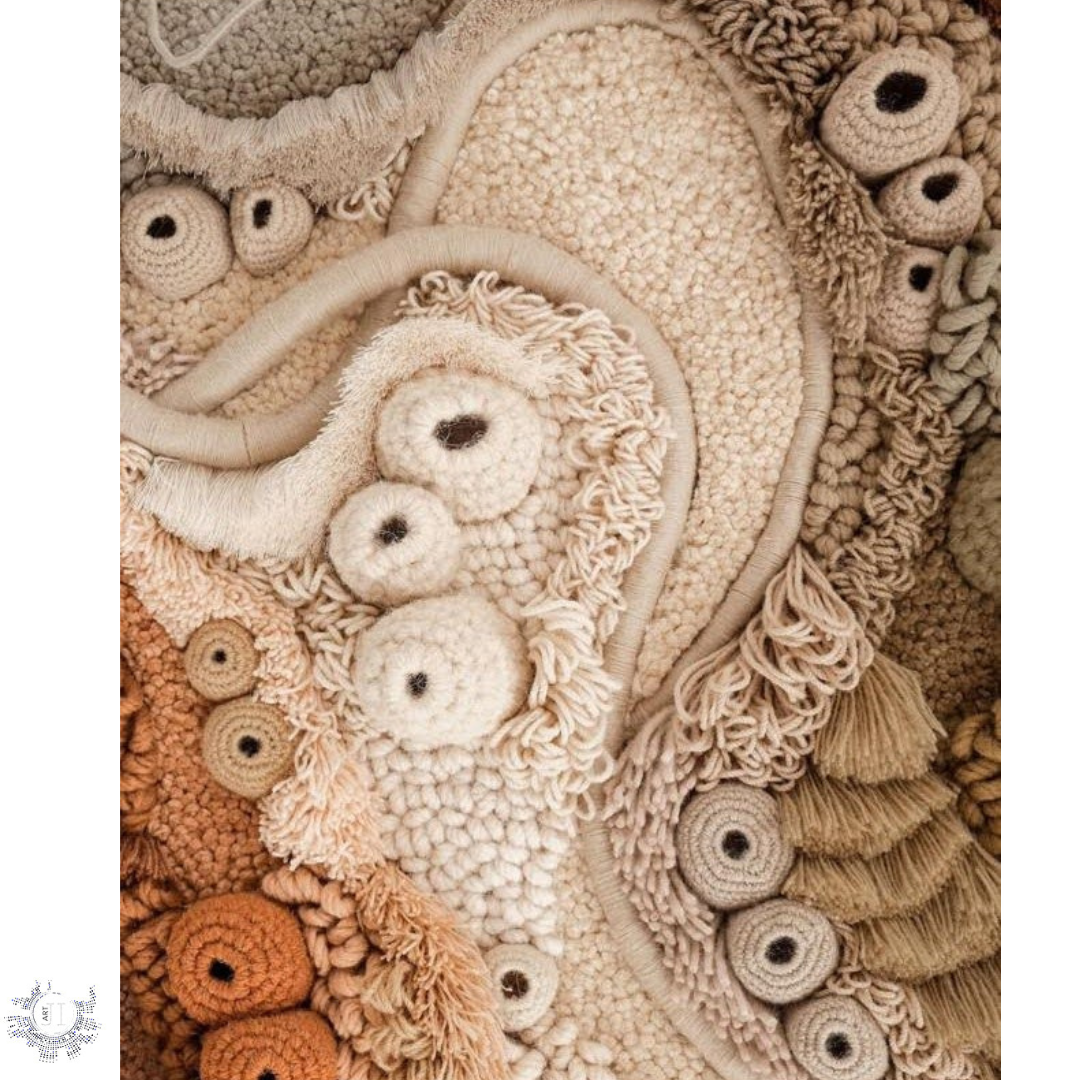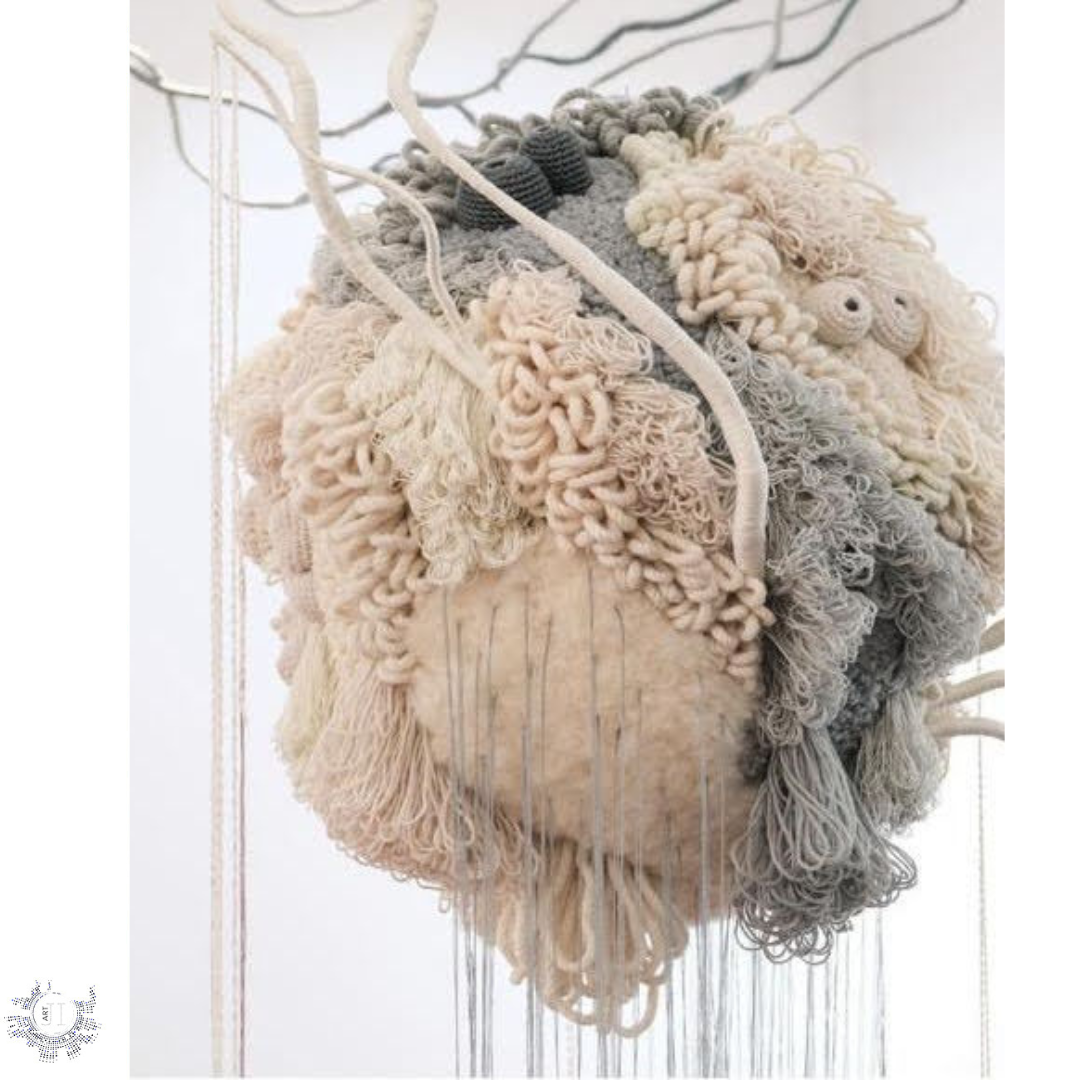STOP WASTING AND START CREATING: THE WORLD OF VANESSA BARRAGÃO
If your craft allows it, upcycle!! It’s not only the most eco-friendly way to create but the most cost effective as well, which is also a great tip for anyone starting!
Vanessa Barragão
In sunny Albufeira, on the Algarve coast of Portugal, Vanessa Barragão's studio stands as a welcoming, artistic stronghold of beauty, warmth, heritage and sustainability. Using ancestral techniques, Vanessa creates soft, cozy and colorful art using textile waste, which speaks about the importance of preserving traditional crafts and advocating for environmental consciousness through upcycling.
During her master's degree, Barragão created her first wool yarn collection entirely from discarded sheep's wool. This was when her love for wool, nature and upcycling centuries-old textile techniques was born.
Barragão's commitment to eco-friendliness is seen at every step of her process. She avoids industrial machinery and opts instead for manual production methods, employing diverse techniques such as crochet, latch hook, hand-tufting, embroidery, felting and knitting.
The artist sources materials from the remnants and deadstock of Portuguese factories, each piece carefully selected and cleansed before being woven into her art, making it a unique fusion of heritage, sustainability, and artistic innovation.
I don’t usually draw since I like freedom during my creation process, so that the flow and gradients grow in the tapestry almost naturally. It varies based on the mood of the day… like a way of expression and meditation.
Vanessa Barragão
The creative process, slow and painstaking at times, is free-flowing, random, spontaneous and expressive, like the organic flow of nature itself. Her approach is intuitive, allowing the mood of the moment to guide her mind, hand and tools, giving birth to unpredictable and deeply personal artworks as an extension of sensations and emotions.
Each year, Vanessa tries to take a trip to a secluded place, deliberately severing ties with the digital world, to connect with nature and introspect, to shape the initial contours of the new message she wishes to convey through her art: a story of the vibrancy and brittleness of the natural world.
Her inspiration comes from vivid memories of her childhood: family trips to the Caribbean, where the breath-taking beauty of coral reefs left a mark in her heart. Later, she – together with the worried locals and concerned scientists – started witnessing their gradual decline, marked by fading colors and diminishing biodiversity.
The textile industry is one of the most polluting in the world. All the machinery used requires tons of energy while producing a lot of waste and disposable trash. It is extremely harmful for our planet and it affects all of its different natural environments, particularly the ocean which absorbs 90% of the atmosphere pollution.
Vanessa Barragão
Among all manufacturing branches, the textile industry, with its reliance on harmful chemicals, energy-intensive machinery, and unsustainable mass production practices, causes one of the greatest tolls to the environment. Vanessa's sustainable, hand-made art is a call to action, urging people to re-evaluate consumption habits and the industrial practices to protect the ecosystems.
Fashion is responsible for up to one-fifth of industrial water pollution, thanks in part to weak regulation and enforcement in producer countries like Bangladesh, where wastewater is commonly dumped directly into rivers and streams. The discharge is often a cocktail of carcinogenic chemicals, dyes, salts and heavy metals that not only hurt the environment, but pollute essential drinking water sources.
CNN
The dyeing and finishing process is water-intensive and involves numerous chemicals: dyes, mordants, and other substances. Many of these are toxic and non-biodegradable. The cultivation of natural fibers such as cotton is heavily reliant on pesticides and fertilizers which can leach into water bodies, causing eutrophication and harming aquatic ecosystems.
The textile industry relies on fossil fuels for energy, especially in the processes of spinning, weaving, and dyeing. The combustion of fossil fuels releases a significant amount of greenhouse gases and other pollutants into the atmosphere, contributing to air pollution and climate change.
A significant portion of textile waste ends up in landfills, where it can take hundreds of years to decompose. The leaching of dyes and chemicals from these textiles contaminates the soil and groundwater.
Every time synthetic garments are washed, they release microplastics – tiny plastic fibers – into the water system. These microfibers are too small to be caught by waste treatment plants and end up in oceans. Marine life ingests these microplastics, which can then enter the food chain, affecting not only marine ecosystems but also human health.
But there is hope.
We have to stop. We, humans, have to change our mindset and start learning ways to fight against this negative issue, in order to recover and rescue our planet. I believe that upcycling and handmade processes are an important way to create art and develop new products. This is where I focus my art. This is the base concept behind my textiles, and it is the way I try to inspire people to change in order to help and improve our Earth’s health.
Vanessa Barragão
Recycling and upcycling help reduce the volume of waste sent to landfills, conserving space and reducing methane emissions from decomposing materials. By diverting textiles from landfills and waterways, they help reduce the amount of waste that can potentially enter and pollute oceans.
Recycling textiles reduces the demand for virgin cotton and other water-intensive fibers, thus conserving significant amounts of water. Besides, recycling textiles uses less energy compared to producing new fibers, thereby reducing greenhouse gas emissions and conserving energy.
Textile manufacturing involves various chemical processes, including dyeing, bleaching, and finishing, which contribute to water and soil pollution. Recycling and upcycling existing textiles minimize the need for these processes on new materials, thus reducing the release of toxic chemicals into the environment.
On top of that, they encourage innovation in sustainable fashion and textile design, leading to the development of eco-friendly materials and production methods.
Art is a very important vehicle to convey a message of not only raising awareness of climate change issues but also to bring a sign of hope.
Vanessa Barragão
Vanessa's sculptural, incredibly soft and tactile works breathe new life into woollen tapestries, repurposing what was once considered waste into art, speaking about the marvels and beauty of the natural world and its fragility.
In one of her marine installations, "Coral Garden," she used materials sourced from the remnants of a rug factory to craft a vivid representation of a plushy, colorful, healthy reef, juxtaposed with a devastatingly bleached counterpart.
Her largest piece to date, "Botanical Tapestry," ambitiously depicts the entire globe within the warp and weft of its fabric. This monumental work, which was handwoven for over 520 hours, comprises 8 kg (18 lbs) of jute and cotton and a gargantuan 42 kg (93 lbs) of recycled wool.
Barragão's creations are soft and warm, yet also offer a strict and strident call to action.
Stop pollution and start recycling.
Stop being the reason for destruction, and become the reason for hope.
Join the forces helping to save the world.
Image courtesy: Vanessa Barragão.
